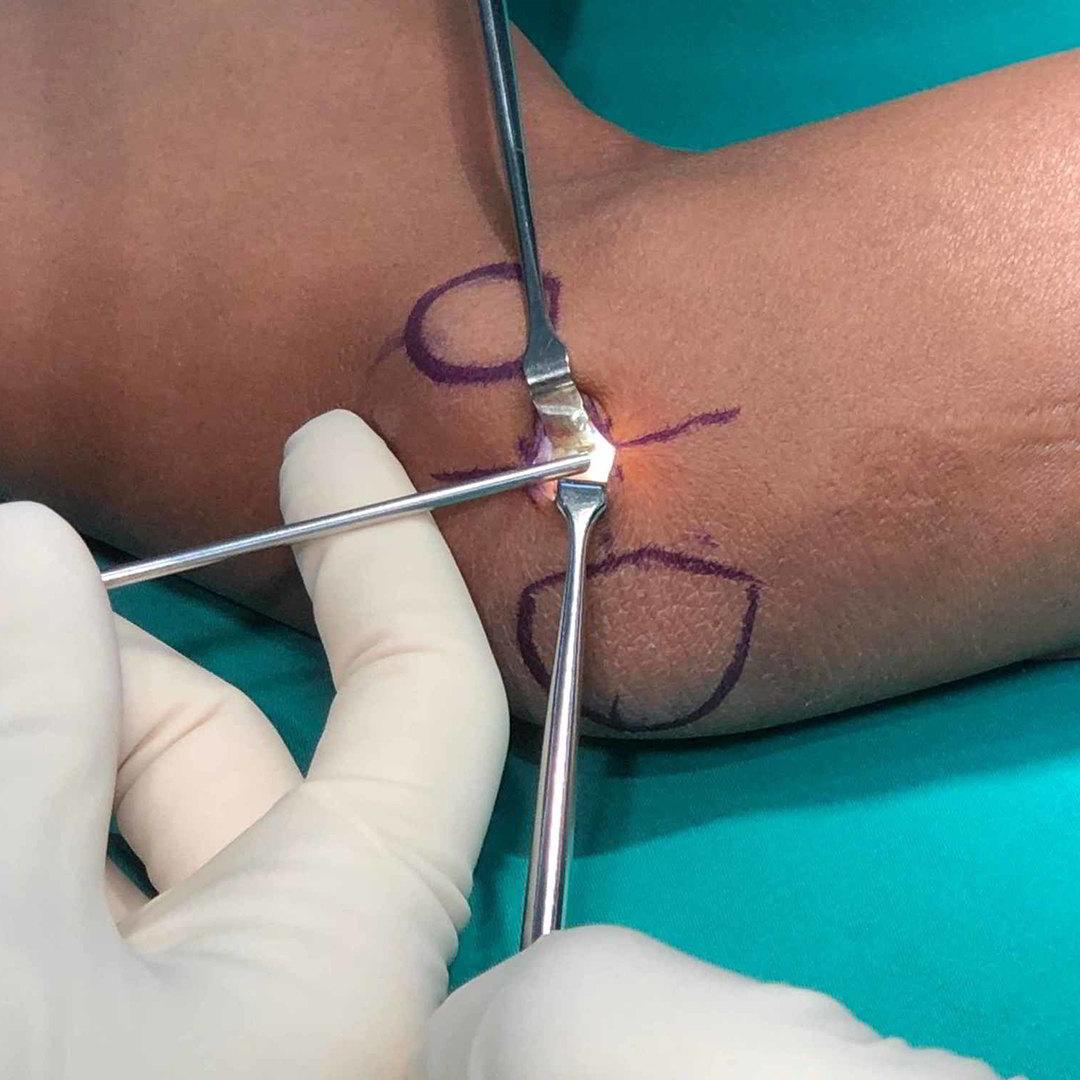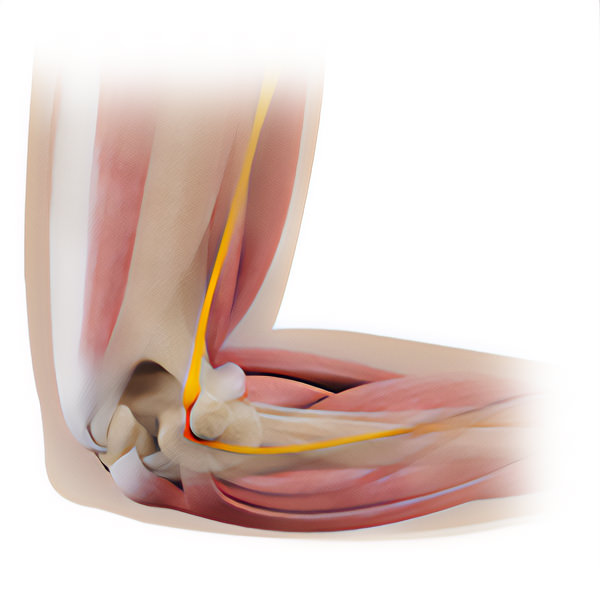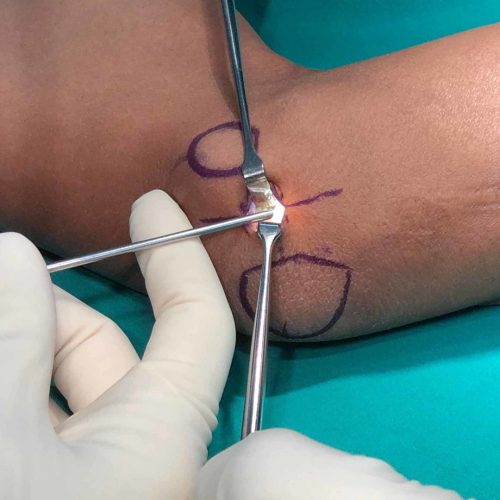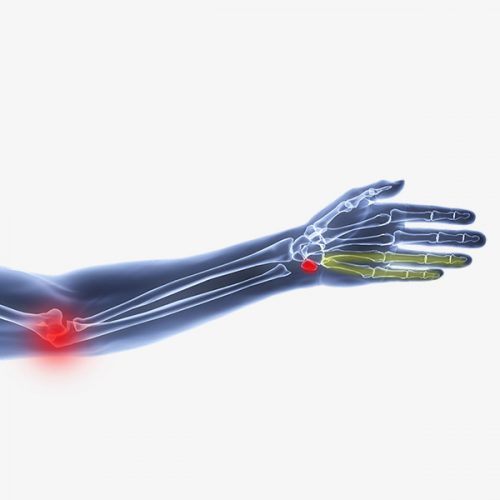





Cubital Tunnel Release
If you have symptoms of Cubital Tunnel Syndrome, Dr. Durand offers effective treatments to release your condition.
PROCEDURE
If symptoms of a cubital tunnel syndrome are extreme, chronic, or do not respond to other forms of treatment, then surgery may be necessary. Dr. Durand may recommend a surgery for people experiencing muscle loss or weakness in their hands because of cubital tunnel syndrome.
Similar to the surgery performed for carpal tunnel syndrome, the ulnar nerve release operation helps reduce pressure on the ulnar nerve by cutting and separating the overlying ligament. The ligament may gradually grow back together post-surgery, but there will be more space in the ulnar tunnel.
People whose symptoms are severe or last longer than 6 weeks should consult their doctor.

Dr. Durand will perform this surgery in:
- Severe cases of ulnar nerve entrapment that fail to respond to conservative measures like anti-inflammatory pills, steroid shots, and ergonomic modifications or injection therapy.
- Cases where pinching of the ulnar nerve has led to extensive muscle weakness or damage
The procedure can enhance comfort and mobility, including:
- Relieve pain and numbness
- Prevent permanent nerve damage
- Improve hand function
Conditions treated:
HOW IS IT DONE
The goal of an open cubital tunnel release surgery is to increase the size of the cubital tunnel and relieve pressure on the ulnar nerve. Dr. Durand will expose the irritated, compressed, or stretched ulnar nerve and either release it, move it, or remove part of it.
During surgery, Dr. Durand makes a 3- to 4-inch incision on the inside edge of the elbow, allowing the cubital tunnel below to be viewed and accessed. He then divides the overlying ligament, known as Osborne’s ligament, increasing the size of the tunnel and reducing pressure on the ulnar nerve.
Most cubital tunnel release surgeries are performed on an outpatient basis. You may be under general anesthesia and asleep during surgery. Or, you may be given local anesthesia, which numbs just your arm and hand, plus a light sedative to keep you relaxed during surgery. The surgery will take less than one hour.

IF YOU ARE CONSIDERING TREATMENT FOR CUBITAL TUNNEL SYNDROME, DR. DANIEL DURAND WILL GUIDE YOU, FROM CONSULTATION TO RECOVERY, TO THE BEST CUBITAL TUNNEL RELEASE PROCEDURES FOR YOUR INDIVIDUAL NEEDS.
POTENTIAL RISKS AND COMPLICATIONS
Any surgery carries risks, but cubital tunnel release surgery is typically a safe and effective procedure. You will be given instructions about how to avoid these specific risks, as well as what to do if you experience these issues after your procedure:
- Pain
- Bleeding
- Infection of the surgical wound
- Continued or returning numbness in your ring and little fingers
- Continued irritation of the ulnar nerve and related symptoms
RESULTS
After the procedure, the ligament begins to heal, and new tissue grows across the division. The new growth heals the ligament and allows more space for the ulnar nerve to slide through.
The results of surgery are generally good. This method of surgery has a success rate for routine cases of nerve compression.
In severe cases, people may continue to experience symptoms even after surgery. However, about 85 percent of people with severe nerve compression who do not respond well to other treatment options may benefit from cubital tunnel surgery.
CONTACT US ONLINE TODAY TO LEARN MORE ABOUT CUBITAL TUNNEL RELEASE PROCEDURE.
DR. DANIEL DURAND HELPS MEN AND WOMEN FROM MONTREAL AREA TO ENJOY A PAIN-FREE LIFE AGAIN THROUGH THIS PROCEDURE.




